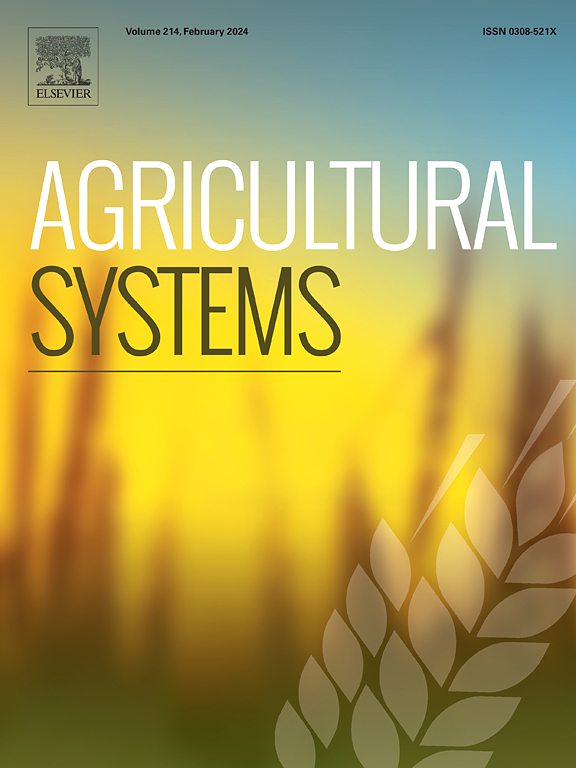Planting date adjustment and varietal replacement can effectively adapt to climate warming in China southern rice area
IF 6.1
1区 农林科学
Q1 AGRICULTURE, MULTIDISCIPLINARY
引用次数: 0
Abstract
CONTEXT
The southern rice cultivation system in China stands out as the most intricate due to its diverse climate and complex terrain, compounded by the interplay between single and double cropping rice. However, the current regionalization of adaptation strategies of rice cropping systems fails to accurately reflect the evolving dynamics brought about by regional variations in rice production and climate warming.
OBJECTIVE
Our aim was to address the challenge of climate change on rice production by evaluating its effects on the rice growth period and potential yield. We also assessed the potential of adjusting planting dates and implementing varietal replacement to mitigate the impacts of climate change on rice production across different maturity stages.
METHODS
Using phenological, climate, and land use data, we employed the validated ORYZA model to analyze the impact of climate change on the growth period and yield of rice in southern China from 1961 to 2020. Subsequently, simulations were carried out for seven scenarios to assess the effects of adjusting planting dates and replacing rice varieties on rice production in the region.
RESULTS AND CONCLUSIONS
Climate change shortened the whole growth period (WGP) by 0.63 ± 0.11 days•10a−1 and decreased potential yield by 239.98 ± 22.76 kg•ha−1•10a−1 over six decades. Changing the planting dates of single and double season rice can lengthen or shorten the growth period of rice, affecting potential yields accordingly. Varietal replacement increased WGP and potential yield by 12.64 days and 2451.07 kg•ha−1 for single rice, but decreased WGP by 13.12 days while increasing yield by 2161.57 kg•ha−1 for double rice. Combined adaptation strategies of planting date and varietal replacement resulted in a 10.7 % increase in WGP and a 19.3 % increase in yield for single rice, and a 7.5 % reduction in WGP but a 9.5 % increase in potential yield for double rice. Our research results show that under changing climatic conditions, adjusting planting dates and implementing varietal replacement can effectively alter the growth period of rice, leading to an increasing trend in potential yield.
SIGNIFICANCE
Variety replacement and sowing date adjustments are two of the most important strategies in crop production management. This study provides the first comprehensive analysis of how both measures impact agricultural production. The findings highlight the significant role of planting date adjustments and variety replacement in adapting to climate warming in southern China, offering critical insights for ensuring food security in the region.

求助全文
约1分钟内获得全文
求助全文
来源期刊

Agricultural Systems
农林科学-农业综合
CiteScore
13.30
自引率
7.60%
发文量
174
审稿时长
30 days
期刊介绍:
Agricultural Systems is an international journal that deals with interactions - among the components of agricultural systems, among hierarchical levels of agricultural systems, between agricultural and other land use systems, and between agricultural systems and their natural, social and economic environments.
The scope includes the development and application of systems analysis methodologies in the following areas:
Systems approaches in the sustainable intensification of agriculture; pathways for sustainable intensification; crop-livestock integration; farm-level resource allocation; quantification of benefits and trade-offs at farm to landscape levels; integrative, participatory and dynamic modelling approaches for qualitative and quantitative assessments of agricultural systems and decision making;
The interactions between agricultural and non-agricultural landscapes; the multiple services of agricultural systems; food security and the environment;
Global change and adaptation science; transformational adaptations as driven by changes in climate, policy, values and attitudes influencing the design of farming systems;
Development and application of farming systems design tools and methods for impact, scenario and case study analysis; managing the complexities of dynamic agricultural systems; innovation systems and multi stakeholder arrangements that support or promote change and (or) inform policy decisions.
 求助内容:
求助内容: 应助结果提醒方式:
应助结果提醒方式:


